FOOTBALL AT FENWAY PARK ...
After Fenway Park's inaugural Red Sox championship season concluded, the turf at the ballpark converted to the gridiron. On November 30, 1912, the ballpark hosted the National High School Football Championship Game, where Oak Park High School of Illinois beat local Everett High School by a score of 32-12. Boston Latin High School and Boston English High School also played a late-November football game in 1912.
In the 1920s, as the Red Sox fortunes slipped, Fenway Park became a prime venue for high school and college football in Boston, including a rare tripleheader of three football games on November 24, 1927. The next season, wooden bleachers were installed in left field for
the first time.
BOSTON COLLEGE AT FENWAY
 |
|
UNDEFEATED B.C. 1920 TEAM |
On October 31, 1914 B.C. played its first home football game at Fenway against Norwich, a 28-6 victory for the Eagles. Led by Jimmy Fitzpatrick and Luke Urban, these teams were very strong, winning five games in 1914 by a total score of 112-9. That year, they won two games at Fenway Park against Norwich and Catholic University (14-0).
In 1915, Alumni Stadium was built on campus and Boston College thereby limiting it's games at Fenway to special games. In 1916 the powerful team went 6-2 with four shutouts, beating arch rival Holy Cross at Fenway on a last period field goal, 17-14. Continuing in 1917, the dynamic team posted another 6-2 record with another four shutout victories.
At Fenway Park, they overpowered cross town opponent Tufts, 20-0 and crushed Holy Cross 34-6. In 1919, returning war hero and future Hall-of-Famer, Frank Cavanaugh was hired as head coach and led his team to a major upset vs. Yale. The annual rivalry game with Holy Cross at Fenway that year was a thrilling 9-7 victory for Cavanaugh's football squad. In 1920, B.C. went undefeated, beating Marietta College at Fenway Park with an exciting 13-3 bout, and winning the school's first "Eastern Championship". Of the eight games, six teams were unable to score on them at all and only powerhouse Yale was able to score a touchdown.
| . |
|
|
|
UNDEFEATED B.C. 1928 TEAM |
1928 saw Boston College returning to play games at Fenway Park en route to another undefeated season under future hall-of-fame coach Joe McKinney, quarterback Al Weston, Patrick Creeden, and All-American end Charlie Murphy. Except for the 6-0 win against Navy, they breezed through all their opponents, winning by two touchdowns or more.
From 1930 thru 1932 all of the Eagles' home games were played at Fenway Park. Even with star players Harry Downes, John Dixon and Al Ricci, the team could not take advantage of many opponents, posting a mediocre team record in those years.
In 1936, under new coach, future Hall-of-Famer Gilmour Dobie, captain Tony DiNatale, running back Altilio Ferenzi and quarterback Fella Gintoff, B.C. upgraded their schedule and posted a 6-1-2 record.
Highlights at Fenway Park included a 13-13 tie with Michigan State, a 7-3 win against North Carolina State as well as a 13-12 win over rival Holy Cross. In 1937, the Eagles posted a disappointed 4-4-1 record, but in 1938 and 1939, under Charlie O'Rourke, Pete Cignetti, and Vito Ananis, the team bounced back, losing only one game each year going 6-1-2 in 1938 and 9-1 in 1939. In those two years the B.C. defense posted an incredible nine shutouts. The 1939 Eagles became the first New England team to earn a New Year's Day bowl invitation, losing to Clemson in the Cotton Bowl.
|
|
|
|
|
UNDEFEATED B.C. 1940 TEAM |
On their way to their greatest season in history, an undefeated 11-0, Sugar Bowl-winning season, Boston College won all six of the games they played at Fenway Park in 1940. In his second year at Boston College, coach Frank Leahy had a team of great talent. Charlie O'Rourke was the quarterback and his backs included veterans Frank Maznicki, Lou Montgomery, and Captain Hank Toczylowski. They were joined by a talented newcomer named Mike Holovak. The team also had wonderful receivers including Henry Woronicz, Gene Goodreault, Ed Zabilski and Don Currivan. The team was undefeated, outscoring its opponents 320 to 52 and held six teams scoreless.
Boston College impressed the sports community by defeating Tulane University (considered the second best team in the nation) 27 to 7 in the second week of the season. On November 16th B.C. handed undefeated Georgetown its first loss in a memorable 19-18 victory that Grantland Rice called "the greatest football game ever played." Then Boston College defeated Tennessee in the Sugar Bowl 19 to 13. The Eagles earned a number five ranking in the 1940 AP National Poll and laid claim to the National Championship.
In 1941, led by All-American Frank "Monk" Maznicki, B.C. posted a 7-3 record with a classic comeback over Holy Cross to end the season. In 1942, they won their first eight games (with the defense allowing only 19 points total) at Fenway Park and entered another showdown against Holy Cross, with the Crusaders crushing the Eagles in one of the biggest upsets in college football history by a 55-12 score, ending the Eagles' hopers for a national title.
The game did include a significant silver lining however, as B.C. had planned a celebration at the Coconut Grove nightclub after the game but cancelled their plans following the defeat. A fire at the Coconut Grove that evening killed 492 patrons and injured hundreds more in the second-worst single building fire in American history. From 1943-1945 a large number of Boston College coaches and players departed to serve their country in World War II and the team, made of some returning veterans and 4Fs played a less difficult schedule, quite often against armed service club teams.
Boston College returned to play home games at Fenway Park in the fall of 1953 after Boston University purchased Braves Field, renamed it Nickerson Field and played their home games there until the football program was abandoned in 1995.
Although the Eagles were winless in their first three home games back at Fenway Park, they finished strong with victories over Wake Forest, the University of Detroit and Holy Cross. Their victory over their rival from Worcester brought out a crowd of 37,000, a dramatic increase from most of BC's 1953 games at Fenway Park. In 1954 behind Frank Magnarelli, Eddie DeSilva and Jimmy Kane, Coach Mike Holovak's 8-1 Eagles, impressively posted their best record since 1942. In 1955 and 1956 the team finished the football season with 5 wins each year, but playing a fairly easy schedule. After losing to Holy Cross 7-0 to conclude the 1956 season.
In 1957
Tom Yawkey decided that Fenway Park would no longer be hosting football and would be used exclusively by the Red Sox (that decision was changed in 1963 for the Boston Patriots). In 1957, Boston College considered dropping football altogether,
but opted to build a new stadium on campus instead.
THE BOSTON REDSKINS (1933-1936)
In July of 1932, the NFL awarded a team to the city of Boston after the Newark Tornadoes folded and the franchise was sold back to the NFL. The ownership group for the new franchise was headed by a man with little football background, George Preston Marshall, a businessman from Washington D.C. Marshall was known for his flair for promotion and his persuasive communication skills. He pioneered gala halftime pageants, organized team bands, and sponsored progressive rule changes, such as splitting NFL into two divisions with title playoff.
The team would play at Braves Field, and so they took the name Boston Braves. The Boston "Football" Braves made their debut on October 2nd losing at home to the Brooklyn Dodgers. A week later, the Braves would beat the New York Giants, 14-6, for their first win. Despite the presence of two rookies, halfback, Cliff Battles and tackle Glen “Turk” Edwards, the new franchise's losses during the first season reached $46,000. The Braves would go on to complete their first season with a 4-4-2 record under Coach Lud Wray.
|
|
The team losing money in its inaugural season, prompting Marshall to take sole ownership of the team the following year. He moved the team to Fenway Park in July of 1933. He introduced a new head coach named Lone Star Dietz. Dietz was a Sioux Indian, and played at the Carlisle Indian Industrial School of Carlisle, Pennsylvania. There, he was a teammate of Jim Thorpe, under famed coach Pop Warner.
Dietz became the 14th head college football coach for the Washington State University Cougars located in Pullman, Washington, a position he held for three seasons, from 1915 until 1917. His coaching record at Washington State was 17 wins, 2 losses, and 1 tie. As of the conclusion of the 2007 season, this ranks him eighth at Washington State in total wins and third at Washington State in winning percentage (.875) He also led Washington State to its only Rose Bowl win in 1916.
Dietz also coached at Purdue University, the University of Wyoming, Louisiana Tech University, and Albright College. Marshall changed the team's official name to the Boston Redskins to honor him.
|
|
|
LONE STAR DIETZ |
The Redskins would alternate wins and losses all season and would finish with a 5-5-2 record. However, one impressive feat during the season was Cliff Battles's performance against the Giants on October 8, 1933, where he rushed 16 times for 215 yards, and scored one touchdown and became the first player ever to rush for more than 200 yards in a game.
In 1934, the Redskins continued to alternate wins and losses finishing in second place with a 6-6 record. Following the season Coach Lone Star Dietz was replaced by former Tufts and Harvard head coach, Eddie Casey.
In 1935, the Redskins split their first two games before going into a season long scoring slump, posting only 23 during a seven game losing streak. The Redskins would post a win and a tie in their final two games, finishing with a 2-8-1 record, while only scoring 65 points on the season.
|
|
|
RAY FLAHERTY |
The Redskins best year in Boston came in 1936. In that draft, the Redskins chose Riley Smith and Wayne Milner, who became a large part of their offense. Another big addition that came in 1936, is when Marshall hired future Hall-of-Famer Ray Flaherty as head coach to replace Eddie Casey. Among his innovations, Flaherty is credited with inventing the screen pass. After playing mediocre football most of the season, the Redskins won their final three games to capture the Eastern Division Championship with a 7-5 record. The stars of the three game Division winning streak were the defense who allowed only six points while the Skins outscored their opponents 74-6.
However, a big disappointment came in their 30-0 win over the Pittsburgh Pirates in the next to last game of the season, when only 4,813 fans showed up to watch them at Fenway Park. Owner George Preston Marshall was so enraged he gave up home field for the NFC Championship Game, choosing to face the Packers at New York's Polo Grounds. The Redskins were never really in the game as the Packers won the Championship with a 21-6 victory. The team would never play another game in Boston and moved to Washington D.C.
One of the reasons the Redskins didn’t draw, is because the fans felt that ownership didn't care about them at the very beginning of the season. The fans found the entire grandstand reserved and the price of admission raised for the first home game. Those fans, who sat in the unreserved section in 1935, were forced to sit out on the field in 1936 for the general admission price.
Before leaving Boston, however, the Redskins made one more big
addition that helped their franchise for years to come. The
addition came after the 1937 NFL
Draft on December 12, 1936, when they signed an innovative rookie quarterback from Texas Christian University,
Sammy Baugh.
THE BOSTON SHAMROCKS (1936)
Also, the competition in 1936 was the Boston Shamrocks of the new American Football League. The Shamrocks were a winning team, who won the league championship, outdrawing the Redskins with a lower ticket price.
The Shamrocks played in the second American Football League from 1936 to 1937, followed by at least one year as an independent in 1938. The team was coached by George Kenneally and also split its games between Braves Field and Fenway Park. The Shamrocks were a successful franchise in the AFL, outdrawing the NFL's Boston Redskins.
During the
1936 American Football League season, lead by
Hank Soar, the Shamrocks won the league's
championship. The Shamrocks did not fare so well in 1937, falling to a
2-5 record that year. During that year, the team managed to sign former Heisman Trophy winner Larry Kelley to a
one-game contract; Kelley reneged on the deal and never played. After the failure of the second AFL,
the Shamrocks continued as an independent, mostly picking up players that had been released from the Pittsburgh Pirates.
THE BOSTON BEARS (1940)
 |
|
ANDY KARPUS |
In 1940, the Boston Bears, owned by Sheldon H. Fairbanks, competed in the third American Football League. With Andy Karpus at quarterback, Coach Eddie Casey’s team was a competitive one, finishing the 1940 season with a 5-4-1 record, good for third place in the AFL, behind league champions Columbus Bulls and second-place Milwaukee Chiefs.
But success on the field did not transform itself into success in the stands. Before the league’s annual preseason meeting, Fairbanks announced the dissolution of the team. In the meeting, the league tabbed Detroit for an expansion team for the 1941 season to replace the Bears.
The team later asked the league for a deferment until 1942, which was granted, but the league suspended operations in the wake of the
Pearl Harbor attack and the U.S. entry into World War II.
THE BOSTON YANKS (1944-1948)
The Boston Yanks were an NFL team that played at Fenway Park from 1944 to 1948. Games that conflicted with the Boston Red Sox schedule were held at the Manning Bowl in Lynn, Mass. Team owner Ted Collins, who managed singer Kate Smith, picked the name "Yanks" because he originally wanted to run a team that played at New York City's Yankee Stadium, and as a result, never won over the fans right from the beginning, because of his love for the New York Yankees.
|
|
|
|
The green and gold team colors were not picked as a tribute to Boston’s Irish heritage, but because of his love for the Irish from Notre Dame. The team never had the class of the New York Yankees, nor the appeal of Notre Dame’s Fighting Irish and could only manage a 2-8 record during its first regular season.
Because of a shortage of players caused by World War II, the Yanks were merged with the Brooklyn Tigers for the 1945 season. The merged team played four home games in Boston and one at Yankee Stadium. But fans from neither city cared as they finished with a 3-6-1 record. When Brooklyn Tigers owner Dan Topping announced his intentions to join the All-America Football Conference in 1946, his NFL franchise was revoked and all of its players were assigned to the Yanks.
|
|
The Yanks would share the field as their home in 1948 with Boston University, although it would be the last year for the Yanks. After three continuous losing seasons, Collins finally was allowed to move to New York in 1949. But instead of an official relocation, he asked the league to officially fold his Boston franchise and give him a new franchise, for a tax write off. The league granted his request, and Collins named his new team, the New York Bulldogs and played their home games at the Polo Grounds with the New York Giants.
The All-America Football Conference merged with the NFL following the 1949 season. Their New York Yankees team merged with the New York Bulldogs and were renamed the New York Yanks for the 1950 season. The New York Yanks were not a success and the team declared bankruptcy following the 1951 season. The league took over the team and moved them to Dallas for the 1952 season, renaming the franchise, the Dallas Texans.
|
|
|
CAROLL |
On January 23,1953 the franchise was sold to Carroll Rosenbloom who moved them to Baltimore and named them the Colts to replace the old Baltimore Colts, one of the teams from the All-American Football Conference that was absorbed unsuccessfully into the NFL for the 1950 and 1951 seasons. The new Baltimore Colts kept the present day uniform blue and white colors of the Dallas Texans.
The Colts remained in Baltimore until 1984 when they were moved to Indianapolis. The Boston Yanks are the only defunct NFL team ever to have the first overall NFL draft pick. They had it twice in 1944 and 46. Both times they selected a quarterback from the University of Notre Dame: Angelo Bertelli and Frank Dancewicz.
During World War II, the Chicago Bears came to Fenway to play a team of Army All-Stars in a pre-season game, for the benefit of helping the war effort in 1942.
BOSTON UNIVERSITY AT FENWAY
Boston University played its home games at Fenway Park from 1936 thru 1939, and then again after World War II, from 1947 thru 1952. The team also used the old Nickerson Field (Riverside) in Weston MA as their practice facility and played home games there when Fenway Park was not available. The old Nickerson Field (Riverside) was located near where the Exit 15 toll booths are on the Massachusetts Turnpike.
In 1936, the Terriers put a powerful football team on the field, started the season off by going 3-0 and not allowing their opponents to score any points in their first three games. On October 24th, undefeated Villanova beat up on the Terriers by a 25-7 score, to give them their first loss. The next week, the team rebounded against unscored-upon Miami to take them to a 7-7 tie. Under Coach Pat Hanley, Leon Spivak, Earl Compton, Garry Famiglietti, Max Miller, Sol Nechtem, and Roy Thompson, the 1936 Terriers, who fought many injuries, finished the season with a very strong 5-1-2 record. The team, allowing only two opponent touchdowns to be scored upon them for the whole season. All five of Boston University's wins were shutouts.
The Terriers picked up in 1937 where they left off. Lead by returning upperclassmen, Nechtem, Famiglietti, Miller and Lou Blazynski the result was another very successful year for Terrier football, with a team record of 6-2. The team started off the season with a 3-0 record, outscoring their opponents 88-8. Their first lost came at the hands of the more favored, Western Reserve University (unbeaten since 1934) by a 7-0 score on a final period punt return. Their only other loss of the season came at the hands of ninth ranked Villanova. They ended the year by beating cross-town rival, Boston College, for the first time in 12 years.
In 1938, under captain Johnny Walker, the Terriers fielded a mediocre football team, going 3-4-1. In 1939, the Terriers looked good at times behind Walker, Walter Williams and Jimmy Cassidy finishing with a successful record of 5-3.
After the war, Boston University fielded very strong teams. Led by Bob Hatch and Johnny Toner in 1947, the team started off very strong by dominating little Mohawk College and N.Y.U. but losing a very close game to Harvard. Their real test came against Purdue and there they were hit hard, finishing with a 5-3 record at the end of the year.
In 1948 Boston University totally dominated their opponents, winning 6 of their first 7 games and scoring over 40 points more than their opponents. Led by wide receiver George Sulima, they posted a 6-2 record.
|
|
In 1949, Harry Agganis took over the Terrier football team and quickly showed that he was head and shoulders above every player on the field. He passed like a pro and closed in on many collegiate scoring records. The team started off 6-0 only to lose the last two games of the season.
In 1951 with Agganis at the helm after a year's absence, the Terriers played great football again. Along with running back Johnny Kastan the Terriers had many one-sided games, but could only manage a 6-4 record. 1952 marked the end of the Agganis era and produced some of the school's biggest wins, including a 9-7 win over highly favored Miami on October 10th.
B.U. continued to play home games at Fenway for the next few years. An interesting note in Fenway history happened on November 12, 1949. On that day Vin Scully, the iconic Dodgers broadcaster, made his professional debut when he provided the play-by-play for CBS Radio from the roof of the first base grandstand, when B.U. played Maryland.
B.U. bought Braves Field after the Boston Braves left for Milwaukee in 1953, renovated the stadium, and renamed it Nickerson Field. From that point on they played all their home football games there.
THE BOSTON PATRIOTS (1963-1968)
On November 16, 1959, Boston business executive Billy Sullivan was awarded the eighth and final franchise of the developing American Football League (AFL). One week later, Northwestern University running back Ron Burton was selected as the franchise's first draft choice and Syracuse running back Gerhardt Schwedes was selected as the team's first territorial choice. Three key personnel decisions were made in the winter of 1960. First, former Boston College head coach Mike Holovak was named director of player personnel. Ed McKeever was hired as the team's first general manager and he selected Lou Saban as the team's first head coach.
|
|
One of the first orders of business of the management group was giving the franchise a name, and that was accomplished through a public contest. Thousands of entries were submitted to name the team and 74 fans suggested the winning name, the Boston Patriots. Shortly after the franchise name was chosen, Boston Globe artist Phil Bissell drew a cartoon of a Minuteman preparing to snap a football and owner Sullivan liked the drawing so much that he selected "Pat Patriot" as the team logo.
On April 1, 1960, Nickerson Field was selected as the first home of the Boston Patriots. The organization's first training camp opened on July 4, 1960 at the University of Massachusetts at Amherst. Approximately 350 players reported for the opening of camp, including a large contingent from Boston College. This group would be trimmed to 35 for the start of the regular season.
The team's first preseason game was held on July 30th and the Patriots defeated the Buffalo Bills 28-7 at War Memorial Stadium in Buffalo. Patriots defensive end Bob Dee recovered a fumble during the game and scored the AFL's first touchdown. The first "home" game was held two weeks later before 11,000 fans at Harvard Stadium and the Patriots lost 24-14 to the Dallas Texans. The team's regular season home opener came on Sept. 9th and 21,597 fans at Nickerson Field watched the team lose to the Denver Broncos 13-10.
|
|
|
|
|
BILLY SULLIVAN |
Patriots' owner Billy Sullivan partnered with Tom Yawkey to push the city to build a new stadium in 1963. In the meantime, Yawkey allowed his new ally to use Fenway Park as his home field.
The duo pushed the city to build a taxpayer financed new 60,000 seat domed stadium, with a retractable roof in the South Station section of Boston. But the city, as before, had no desire to fund a private stadium and the plan didn’t see the light of day.
The Patriots claimed their first division crown with a 7-6-1 record. The team lost the AFL title game, 51-10, to the San Diego Chargers. They did play in the AFL championship game, following the 1963 season and lost to the San Diego Chargers 51–10.
In 1963, eleven Patriots made the AFL All-star team, including
Gino Cappelletti,
Nick
Buoniconti, and
Babe Parilli. A number of other Patriots players emerged as stars in the AFL during the 1960s, including defensive linemen
Houston Antwine,
Bob Dee,
Larry Eisenhauer and
Jim Lee Hunt and center
Jon Morris In the late 1960's, fullback
Jim Nance became a
powerful offensive weapon for the Patriots, gaining 1,458 yards in 1966 and 1,216 in 1967, when he was the American Football League's
Most Valuable Player.
When the NFL and AFL merged in 1970, the Patriots were placed
in the AFC East division. The Patriots' time in the AFL saw them struggle most years as they never had a regular home stadium.
Nickerson Field (1960-1962), Harvard Stadium (1970),
Fenway Park (1963-1968), and Boston College's Alumni Stadium (1969) all served as home fields during their time in the American Football League.
In 1971, the Patriots moved to a new stadium in Foxborough. As a result of the move, they announced they would change their name from the Boston Patriots to the Bay State Patriots. The name was rejected by the NFL and on March 23, 1971, the team officially announced they would become the New England Patriots. On Aug. 15, 1971, the Patriots played their first game at Schaefer Stadium in Foxborough, defeating the New York Giants 20-14, before a crowd of 60,423 in a preseason contest.
On November 21, 2015, college football returned to Fenway as Notre Dame hosted Boston College. Even though the game was played in Boston, it was officially a Notre Dame home game as part of its Shamrock Series, an annual game that Notre Dame hosts in venues across the country. Notre Dame beat Boston College, 19-16.
2020 was the first year of playing the "Fenway Bowl" college football game. The game was cancelled on October 23, 2020, well before the regular season started, because of COVID.
The 2021 edition was again cancelled on December 26, 2021, three days before it was set to be played. An outbreak of the Omicron variant within the Virginia program, forced the second cancellation, as they were unable to play. Their scheduled opponent, SMU, was unable to find a replacement.
The "Fenway Bowl"'s inaugural game was finally played on December 17, 2022. The game featured the Cincinnati Bearcats from the American Athletic Conference, and the Louisville Cardinals from the Atlantic Coast Conference. Louisville won the game 24 to 7.

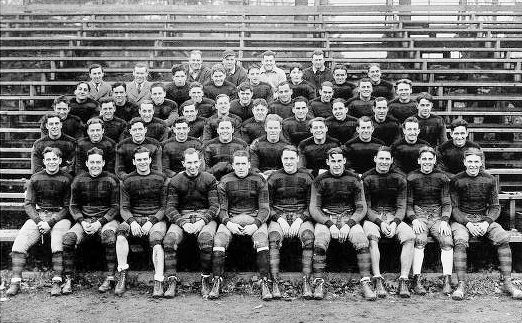
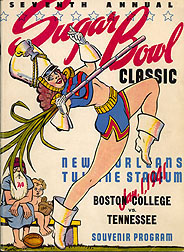

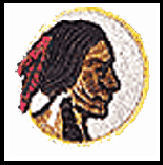

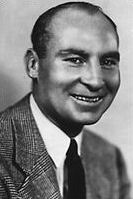

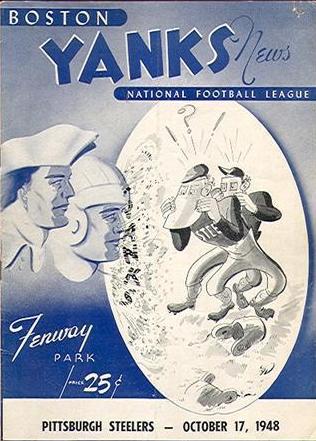
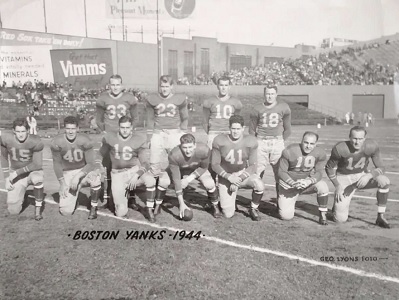
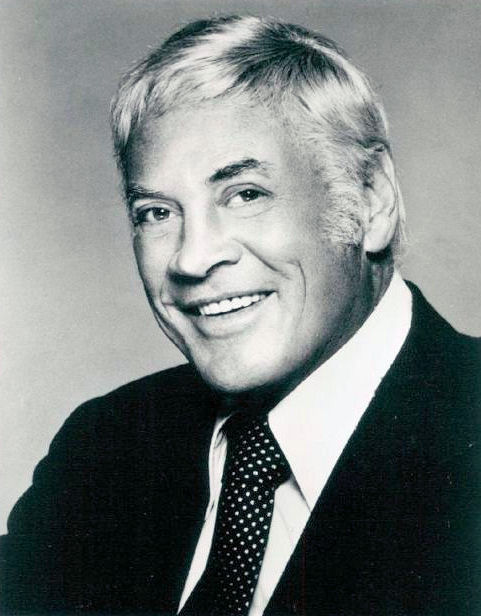

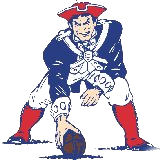
.jpg)
